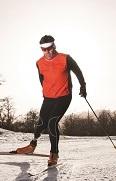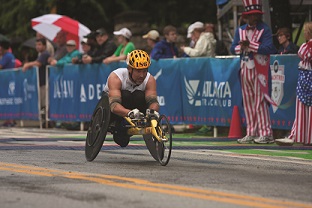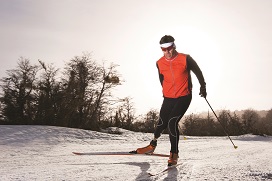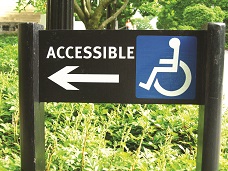
 People who want to plan a sports event specifically for athletes with disabilities often aren’t sure where to start. After all, this is a new demographic for them. Many event planners have never worked with people with physical or developmental disabilities before. They want to create an event that is welcoming but they’re not sure how to start.
People who want to plan a sports event specifically for athletes with disabilities often aren’t sure where to start. After all, this is a new demographic for them. Many event planners have never worked with people with physical or developmental disabilities before. They want to create an event that is welcoming but they’re not sure how to start.
Here at the Florida Disabled Outdoors Association, we find it helpful to picture the outcome we want and go from there. For us, it’s a matter of tapping into a group who enjoys recreation just as much as anyone else. After all, we know the population is out there, just waiting to be served. According to the US Census Bureau, about 56.7 million people — 19 percent of the population — had a disability in 2010, with many, particularly older people, reporting the disability was severe. According to the National Organization on Disability, people with disabilities have a combined income of more than $1 trillion with $220 billion in discretionary income.
Like anyone else, people with disabilities want to socialize, have a good time and enjoy fun, physical activities. They like to challenge themselves and many are very competitive, both personally and with one another. They like to travel to different cities, go sightseeing, try new restaurants and shop in places they’ve never been. Like all athletes, they make a mark on the city’s economic landscape and if they have a good time, they come back – and they bring their friends and families. In other words, they’re exactly what you want at your sports event. But how do you reach them?
We often tell people this: the best way to get started is to create a welcoming environment for all attendees. And while a lot of planners take that to mean they need to have handicapped parking spaces or special rest rooms, the reality is that it starts a lot earlier than that, with your marketing materials. Here are a few hints and tips we at FDOA have learned over the years.
Getting people to an event begins with letting them know they will be welcome. Make sure your materials for the meeting clearly illustrate that this is an event for people of diverse abilities. For example, photos should show individuals with wheelchairs or walkers, children with developmental disabilities and so on. Right up front, you want to depict diversity so your target audience knows this is an event for them.
Make your materials useful to everyone. If you will be using pdf documents on your website, make sure they are readable by individuals who have vision impairments. You can partner with a local organization that services blind and visually impaired individuals to help you out with this.
Avoid using outdated terms like “handicapped” or “disabled” and instead use “People First” language, such as “person with a disability” or “athlete with a disability.” This puts the focus on the person rather than on their disability.
 Provide information about the accessibility of the facility where your program will be held. This might be a sports complex, but it also might be a convention center, a natatorium, a hotel or a park. (It might also be a combination of several venues.) Make sure your materials include complete information about the venue(s), such as location of curb cuts, roll-in shower and pool lift availability in advance in your marketing materials and have appropriate, easy to read, signage on-site.
Provide information about the accessibility of the facility where your program will be held. This might be a sports complex, but it also might be a convention center, a natatorium, a hotel or a park. (It might also be a combination of several venues.) Make sure your materials include complete information about the venue(s), such as location of curb cuts, roll-in shower and pool lift availability in advance in your marketing materials and have appropriate, easy to read, signage on-site.
Err on the side of more services, rather than fewer. Here at FDOA, we serve a variety of individuals with a variety of challenges, so there are a variety of services available at our events. One year, we arranged to have an interpreter for the deaf be present at one of our events. We might not have needed that person that first year, but the next year, the event was attended by several people who were deaf or hard of hearing. People in the disabilities community like to share information, the same way everyone else does. They’re very good at networking and letting one another know about accessible events. Never discount the power of their communication with one another.
Don’t be afraid you’ll be overwhelmed by participants. A lot of planners who are hosting their first event are worried they will be overrun by people with special needs and won’t be able to help them all. The fact is that like any other sports event, events for individuals with disabilities take time to build a reputation.
Sports events for the disabled tend to attract spectators with disabilities as well as able-bodied families and friends. Have a sufficient amount of accessible seating available but be aware that families may want to sit together, and not all of them may need special accommodations. The great thing, though, is that many of your spectators with disabilities can be inspired to return the following year as athletes – and families and friends may decide they want to volunteer at the event. Every event has the potential to grow, based on the experience people have when they attend.
Think of all events, not just those in sports venues. Make sure that any aisles in exhibit halls, trade shows, receptions, banquets, dinners, silent auctions and rooms for ancillary events are wide enough for a wheelchair to navigate. It is frustrating for people see an event advertised but be unable to access it. If portable toilets will be used, make sure you have an adequate number of accessible units as well. If you are holding functions off-site, make sure that the transportation arranged is accessible.
Don’t be afraid to ask whether participants need assistance. Many people are uncomfortable in the presence of those with physical handicaps. They are afraid to offend the person by asking if they require help. The fact is this: many people with disabilities do need at least some form of assistance. A person with visual impairments may want help navigating through a crowded area or across a street. A person in a wheelchair might need assistance getting through a door or up a ramp. Remember that if they have arrived at your event, they want to participate. Never be afraid to ask what you can do to make their experience better. If they don’t need help, they’ll let you know.
Ask for volunteers with specific experience. Obviously, safety is paramount for all planners of sports events. At events for FDOA, we have experts who come in for each of the activities we offer, and those people have specialized experience. For example, they may be skilled at helping people with challenges participate in water sports or horseback riding or rock climbing. They instruct our volunteers on how to work safely with participants, and how to help them. While some sports events will call for special training of volunteers and safety personnel, others may simply require an overview of what will be needed and how to help. Not every volunteer will require first aid training or a comprehensive understanding of the athlete’s diagnosis in order to be of assistance with the event.

At the same time, something to let people know is that not all disabilities are the same. For example, an event may host a number of children with developmental disabilities, and each will be different in terms of their skills and challenges. You may have several adults with MS, each with a specific set of needs. As always, it is person-specific.
There are plenty of resources out there; we always recommend that planners reach out to local organizations who serve individuals with disabilities. Another great resource is Disabled Sports USA, which has a variety of local chapters.
The potential for sports is unlimited. Years ago, people assumed that individuals with disabilities were just playing wheelchair basketball. These days, there are almost no limitations. Young people (or even older people) who are used to being active might be stricken with a disabling illness or a profound injury, but with adaptive technology and a society that is committed to providing accessibility, they are learning they can ski, play soccer, race, swim, SCUBA dive – even fly an ultralight. It’s all possible.

